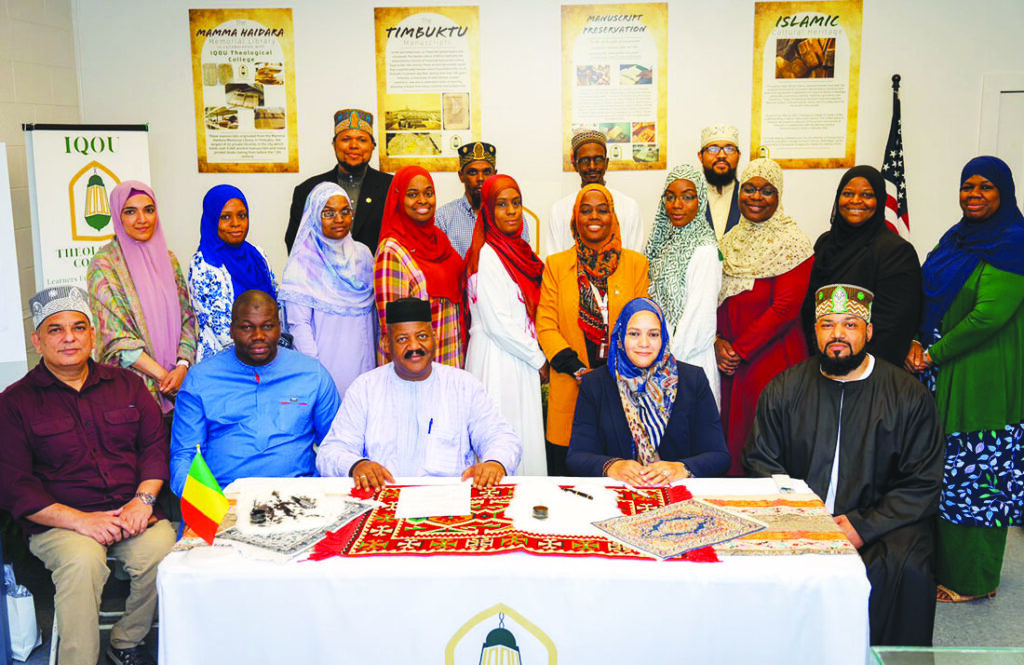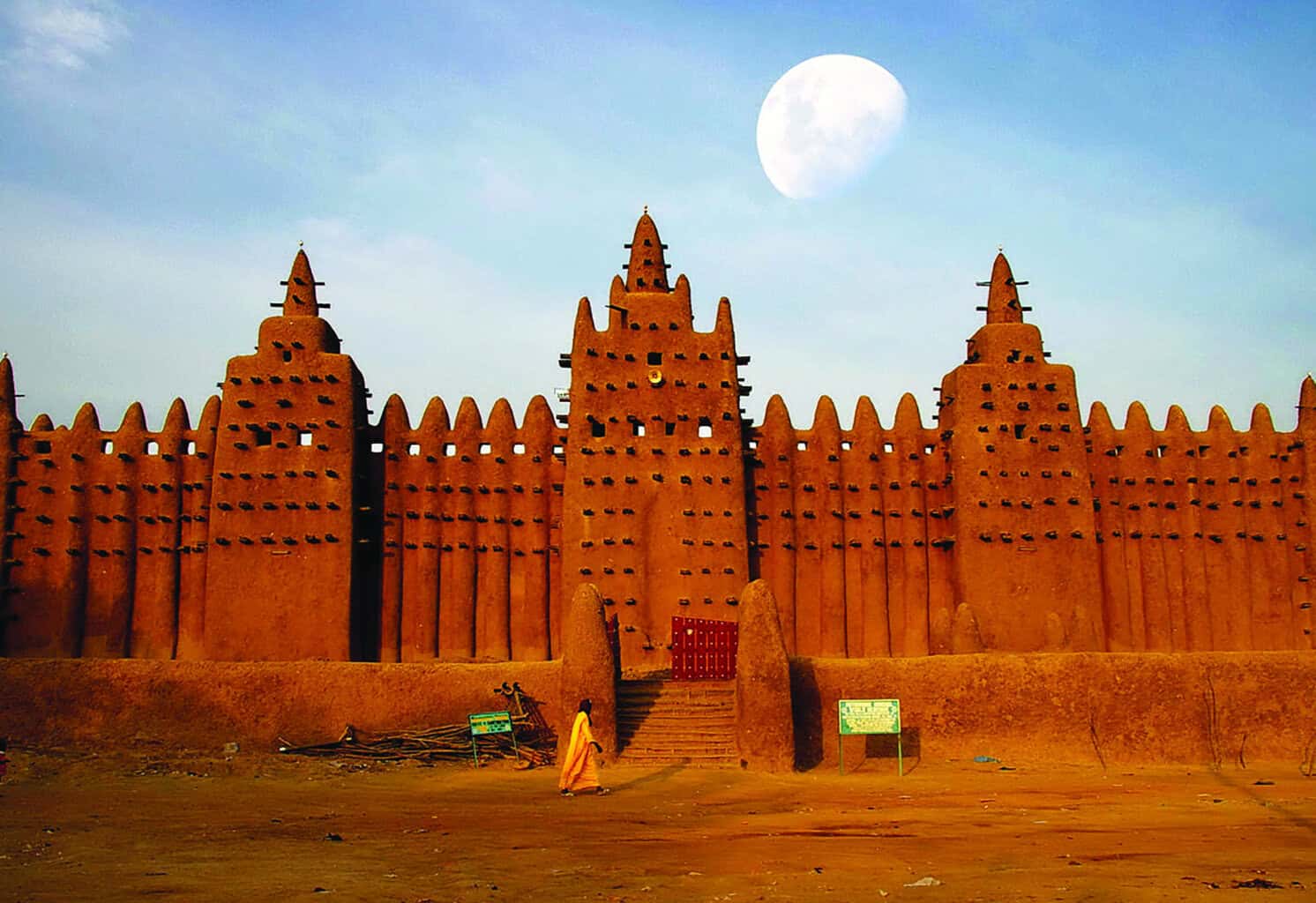THE UNIVERSITY OF SANKORE, TIMBUKTU
Sankore’s achievement in higher education is important to Islamic Civilization even though it is less known in comparison to Al-Azhar, Al-Qayrawan, Al-Qarawiyyin and Qurtuba Universities.
The Sankore Mosque was founded in 989 CE by the erudite chief judge of Timbuktu, Al-Qadi Aqib ibn Mahmud ibn Umar. He had built the inner court of the mosque parallel to the exact dimensions of the Ka’abah in Makkah. A wealthy Mandinka lady financed Sankore University making it the leading centre of education. The Sankore University prospered and became a very significant seat of learning in the Muslim world, especially under the reign of Mansa Musa (1307-1332) and the Askia Dynasty (1493-1591).
The University of Sankore had no central administration; rather, it was composed of several entirely independent schools or colleges, each run by a single master (scholar or professor). The courses took place in the open courtyards of mosque complexes or private residences. The principal subject matter taught at the University included Qur’anic and Islamic studies, law along with literature. Other subjects included medicine and surgery, astronomy, mathematics, physics, chemistry, philosophy, language and linguistics, geography, history, as well as art. Students were also reported to have spent time in learning a trade along with relevant business code and ethics. The university trade shops offered classes in business, carpentry, farming, fishing, construction, shoe making, tailoring, navigation, etc. It prospered and became a very significant seat of learning in the Muslim world. It was claimed that the intellectual freedom enjoyed in
Western Universities was inspired from universities like those in Sankore and Qurtuba (Muslim Spain). Memorising the Qur’an and mastering the Arabic language was compulsory for students; as Arabic was the lingua franca of the university, as well as the language of trade and commerce in Timbuktu. Withstanding a few manuscripts, which are in Songhay and another a’jami language, all the remaining 70,000 manuscripts that are believed to have originated from the University of Sankore are in Arabic. The Al-Furqan Islamic Heritage Foundation in London published a list of these manuscripts, which can be found in a 5-volume collection in the Ahmed Baba library.
Preserving the Manuscripts
Dr. Abdel Kader Haidara, the founder of the Mamma Haidara Commemorative Library, has maintained an integral role in the preservation of these priceless manuscripts. Dr. Haidara’s dedication to safeguarding Mali’s rich heritage gained international recognition, particularly during the crisis of 2012, when Dr. Haidara orchestrated a daring rescue mission to save thousands of manuscripts from imminent destruction. His well-documented heroic efforts ensured the survival of centuries-old documents.
Last year, Dr Haidara visited the US to sign a historical memorandum of understanding with IQOU Theological College to loan a select portion of Timbuktu artifacts for research and exhibition. Signed by the president of IQOU Theological College, Syeda Zainab Gillani, the memorable partnership with the Mamma Haidara Library of Timbuktu is in effect from May 2024 to May 2026 and details the collaborative activities upon which the two institutions have mutually agreed. “We’re most excited that IQOU Theological College has been granted permission to exhibit ancient Timbuktu manuscripts,” said President Gillani, “We’re only the third organization to be able to do so in the United States, so we intend to offer a unique opportunity to study the texts, revive some of the sciences contained in the pages and promote a deeper exploration of academic research and discourse on contemporary issues.

High Standards
The university was renowned for its high standards and admission requirements, which in turn produced world-class scholars, recognised by their publications and graduates. Quoting the French author Felix Dubois in his book, Timbuctoo the Mysterious:
“The scholars of Timbuctoo (Timbuktu) yielded in nothing, to the saints in the sojourns in the foreign universities of Fez, Tunis, and Cairo. They astounded the most learned men of Islam by their erudition. That these Negroes were on a level with the Arabian savants is proved by the fact that they were installed as professors in Morocco and Egypt. In contrast to this, we find that Arabs were not always equal to the requirements of Sankore.” Felix Dubois
The most famous scholar of Timbuktu was Ahmad Baba as-Sudane (1564-1627), the final Chancellor of Sankore University. He penned over 60 books on various subjects including law, medicine, philosophy, astronomy, mathematics, etc. He was a matchless jurist, professor, and Imam of his time. In 1593, during the Moroccan invasion, he was deported to Fez, while most of his work was destroyed.
Most of these scholars were of the Maliki School of thought and followed the Qadiriyyah tariqat (spiritual path); many of them already being graduates from other educational establishments in Fez, Tunis, Cairo, and Makkah in the early history of Sankore.
MuslimHeritage
With contributions from Yasmin Abdul-Atheem

